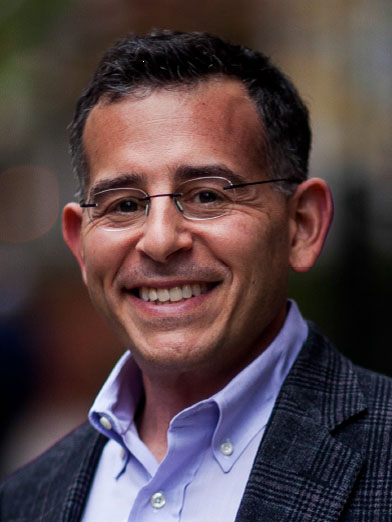
This story was updated in June 2020, including new studies and readings on race, substance abuse and COVID-19 linked at the end of the dialogue.
The COVID-19 pandemic and lockdown, as well as protests for racial justice in the face of police brutality, make it strikingly clear that Black and Brown lives continue to be at disproportionately great risk in the United States.
Recent studies show that the “perfect storm” of the pandemic, unemployment and decreased community supports can increase substance abuse rates—including for drugs like opioids. While the opioid epidemic that has ravaged the nation over the last two decades appears to be plateauing for white users, those numbers hide significant health disparities for people of color, suggesting that policies and programs targeting the opioid epidemic need additional focus on groups previously overlooked or treated differently, especially Black, Latino and American Indian populations.

Last fall, Heller associate dean Maria Madison, who holds an ScD in public health, and Andrew Kolodny, medical director of the Opioid Policy Research Collaborative, sat down for a conversation with Heller Magazine. They discussed the need to recognize racial and other disparities in data, the best way for health-care workers, law enforcement officials and policymakers to address all populations affected by the opioid epidemic.
MARIA MADISON: When I heard you and others describing the “light at the end of the tunnel” of the opioid epidemic, my question was, “For whom is the light shining at the end of the tunnel?” It could be dangerous to say the light is shining for everyone, because we want to continue to emphasize to politicians and policymakers that whatever progress has been made has been very uneven across racial and other groups.

DR. ANDREW KOLODNY: I was so happy when you called me, Maria, because you’re right — the national data mask important differences in geography, age and race. The data can even be misleading at times. We get the overall number of people who are dying, and the national data will report specific drugs, including types of opioids; then policymakers may draw conclusions based on that data. We’re not doing a great job of responding to the epidemic, and one of the reasons is that there’s an epidemiology to our epidemic. We need to understand how it affects different populations differently — we’re not doing a good job of looking at those differences.
From 1997 to about 2011, there was a 900% increase in opioid addiction in the United States, mostly among whites. However, starting around 2013, the opioid crisis began impacting heroin-using survivors of the previous opioid-addiction epidemic, which peaked in the 1970s. That epidemic disproportionately affected low-income Blacks and Latinos. The emergence of illicit fentanyl in the eastern half of the United States created a much more dangerous heroin supply. We’ve seen a soaring increase in deaths from heroin users, which has a disproportionate impact on people of color.
MM: If you look at life expectancies across America, the life-expectancy gap between races had been narrowing over the last few decades until very recently, with the emergence of illicit fentanyl. That’s because more whites were dying from opioid drug overdoses, while Blacks have been experiencing improvements in life expectancy because of improvements in chronic diseases.
But why have Blacks not become addicted to prescription opioids at the same rate as whites? There are many reasons. Three that come to mind that draw our attention to systemic racism are:
1. White practitioners’ belief that Blacks don’t experience pain in the same way as whites.
2. Some of those practitioners are less likely to prescribe opioids to Blacks because they view them as predisposed to becoming addicted, as deviants.
3. Blacks are less likely to access health services because of historical distrust of the American medical system and lessons from past drug epidemics (involving incarceration, for example).
AK: When we talk about the soaring increase in addiction to prescription opioids, it’s disproportionately white. I believe that racist notions about pain and racial stereotypes about addiction or diversion of prescriptions have played a protective role for nonwhites. Doctors have been prescribing opioids more conservatively to nonwhites than they have to whites. Doctors should have been prescribing opioids very cautiously to all their patients, but have prescribed much too aggressively for their white patients.
For many doctors, the idea that their prescriptions could cause addiction is foreign to them. They may understand we have an opioid crisis, but they assume it’s driven by so-called “drug abusers.” They think their job is to avoid prescribing to people who might want opioids to get high. But they fail to recognize that addiction can occur even when opioids are taken exactly as prescribed. They may have a notion of what an “addict” is, and it seems impossible to them that their white middle-class patient could somehow turn into an “addict.” During my training in medical school, I witnessed a woman who had cancer and who needed opioids, but was scared of becoming addicted. The doctor’s response was, “This isn’t going to turn you into one of those people who steals radios out of cars.”
MM: At the root of how we talk about the epidemic and understand it is systemic racism. The language that’s used around the white epidemic is “substance use disorder” versus the language that’s used around Blacks is “drug addict” or “crack whores.” Right now, a common term is “deaths of despair,” for example, for suicides as a result of opioids. There’s compassionate language that’s been applied to the white population, and the policy response follows that cognitive empathy. Federal, state and local governments have found money to support these individuals who are addicted.
Compare that to the Black population. Black individuals are more likely to be incarcerated than placed into free treatment programs. We have done such a poor job of addressing systemic racism around these issues. The narrative now is that the pharmaceutical companies must pay, the physicians are at fault or the FDA is at fault. It’s not the individual at fault. But when it’s the Black population, there’s terrifying differential treatment, not just of Blacks but of Black men in particular, evidenced in their particularly worse life expectancy rates overall and over centuries.
AK: With the heroin epidemic of the 1970s and the crack cocaine epidemic of the 1980s, the message from policymakers was that we could arrest our way out of this problem, contributing greatly to mass incarceration. But this time, even conservative politicians say arresting people isn’t the answer. In the hbo documentary “Warning: This Drug May Kill You,” [on which Kolodny served as medical consultant] there’s a scene of a young white heroin user whose mother and counselor bring her to a police station to access help. The policeman speaks to her compassionately. When he goes through her belongings and finds heroin, he tells her, “We’re going to throw this out,” and she’s taken to an addiction treatment program. The idea that a nonwhite person who was addicted to crack cocaine could have gone to a police station for treatment and help — you never would have seen that.
I remember once I was at an opioid crisis rally in Washington, D.C., wearing a T-shirt promoting the rally with a syringe on it. A group of African American men saw me with the shirt and basically said, “You all didn’t care so much about this when it was affecting our communities.” And I understand that sentiment.
MM: So how can we dismantle systemic racism and help end this crisis? I believe we need better medical school training on how we’re 99.999% the same, so that we can change differential treatment. We need compassionate conversations and nondiscriminatory language. We must allocate funding equitably across populations. We have to create policies that attack the root cause of prescription drug distribution with the same fervor and energy we attacked the tobacco industry and are now attacking the pharmaceutical industry.
And we must shine a light on those most impacted by discriminatory practices and beliefs. People ask me, “Maria, why are you always talking about race, particularly indigenous and Black women and men?” Because they have some of the lowest life expectancy in this country, and that’s because of systemic racism. With persistently low life expectancy, they are the miner’s canary for those left out of the common narratives in too many public health discussions, policies and responses. The differentials in life expectancy are warnings that the atmosphere in the mine is toxic not just for the canary, but for the miners as well. Focusing only on a white opioid crisis obscures the bigger picture. We fail society when we miss opportunities to draw attention to those most persistently affected by U.S. disparities in health, education, labor and wages.
AK: I agree with everything you said. We need to understand the way this epidemic is affecting different groups. Trying to draw conclusions from national overdose death data can be misleading — we must drill down. There’s a popular narrative that this has turned from a prescription opioid problem, into a heroin problem, into an illicit fentanyl problem. That narrative implies there’s a homogeneous group of drug users, who are white, switching from one drug to another. We actually have different groups of opioid-addicted Americans, and the opioid crisis looks different in different parts of the country. The geographic area that’s experienced the sharpest increase in opioid overdose deaths over the past few years is Washington, D.C., where an aging group of nonwhite men are dying at an astonishingly high rate because of fentanyl in the heroin supply.
If you don’t understand the epidemiology, you will fail in your responses to the problem. You won’t direct the resources to where they’re most needed. Your prevention efforts will fail. Your treatment efforts will fail. You must dig deeper.
Additional Readings and Resources
Medscape: What Past Disasters Tell Us About COVID-19 and Substance Abuse
Brookings: Marijuana’s racist history shows the need for comprehensive drug reform
